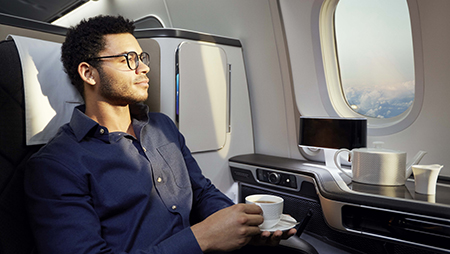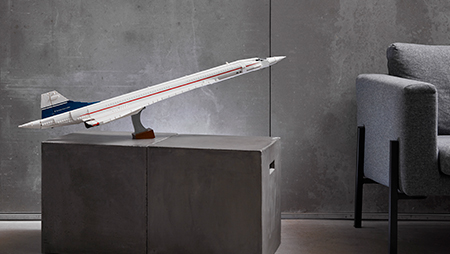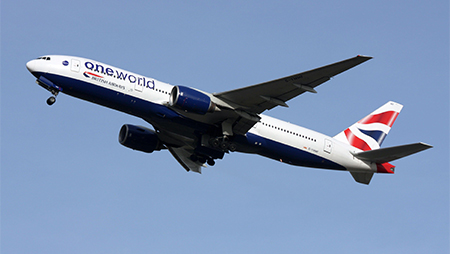June 2024
Can you guess the aircraft by just its shape?
Will you pass out of flight school with honours or struggle to get off the ground? Test the breadth of your aviation knowledge and see if you can identify these icons of the air by their silhouette alone…
Hover over the image and click ‘Tap to reveal’ to see each answer
Mystery aircraft #1
This gentle giant truly defies gravity and can carry as many as 853 passengers – that’s 248 more than its nearest rival, the Boeing 747-800 (equivalent to an entire Airbus A321 worth of passengers). We are currently the largest operator in Europe of this superjumbo, and it remains a firm favourite due to its quiet cabins, large windows and resistance to turbulence. Cabin upgrades rolling out from the end of this year are set to prolong the love affair.
First flight: 2005
Mystery aircraft #2
A true British original, this aircraft was built specifically to our forerunner BOAC’s requirements for operations in ‘hot and high’ conditions. In this type of environment, it’s harder for planes to gain lift – and the bigger the plane the more lift is required. This is one of the reasons why the upcoming Boeing 777-9 has extendable wings, as these allow it to perform better at airports such as Dubai or Doha. This one, however, had four rear-mounted Rolls-Royce Conway engines and an enormous T-tail. These attributes propelled the aircraft to holding the subsonic transatlantic speed record until 2020.
First flight: 1964
Mystery aircraft #3
Did you know that British Airways once had a helicopter division? Among its operations, British Airways Helicopters ran flights from Cornwall to the Isles of Scilly and was instrumental in setting up Airlink, a service that connected Gatwick to Heathrow by helicopter from 1978 to 1986. Today, with more conventional methods of transiting between airports, you’ll see the military variants supporting the British Army, where they can lift up to ten tonnes of cargo at a time.
First flight: 1962
Mystery aircraft #4
Arguably one of the most versatile aircraft ever built, this light transport plane has a robust design, capable of delivering cargo or parachutists across a variety of tricky ground surfaces. In World War II, the plane was pivotal during the early stages of the D-Day landings. To mark the 80th anniversary of the event this year, the largest grouping of the aircraft in decades took place at the Duxford Air Show, with up to nine of them reunited. Outside of their military role, some venerable examples of this plane can still be seen in cargo service in the wilds of Alaska, as their ability to land on all terrains has been hard to replicate.
First flight: 1935
Mystery aircraft #5
Once a common sight and firm favourite of those flying from London City, this one is a pretty unusual bird. Specially designed for steep climbs out of small airports, the plane had a distinctive T-tail, air brake and four jets – almost unheard of for an aircraft of its size. The ‘Baby Jumbo’ proved incredibly versatile, flying passengers, freight and even the late Queen around Europe.
First flight: 1981
Mystery aircraft #5
A design collaboration between the UK, Germany, Italy and Spain, this plane’s delta wing and distinctive canards (the tiny wing-like fins below the cockpit) give it an incredibly distinctive look – but these features exist for one thing above all others: agility. It is used extensively across Europe, and by the RAF in particular, for its quick reaction capability, being able to climb 315m a second to an altitude of nearly 20,000m (6,900m higher than a Boeing 777), at speeds of 1,320mph.
First flight: 1994
This article has been tagged Technology
More from previous issues

The First cabin: what to expect
Regardless of your destination, flying First with us is an experience in itself. This ultimate guide is here to tell you why

Ten top gifts for the travel-mad dad
The ultimate travel gift guide you need to bookmark for Father's Day

25 things you need to know about oneworld
Dive into these juicy facts about the airline alliance that’s celebrating its 25th birthday

Behind the wheel with Nyck de Vries
Formula E driver Nyck de Vries shares his stories from driving abroad and his dream car
